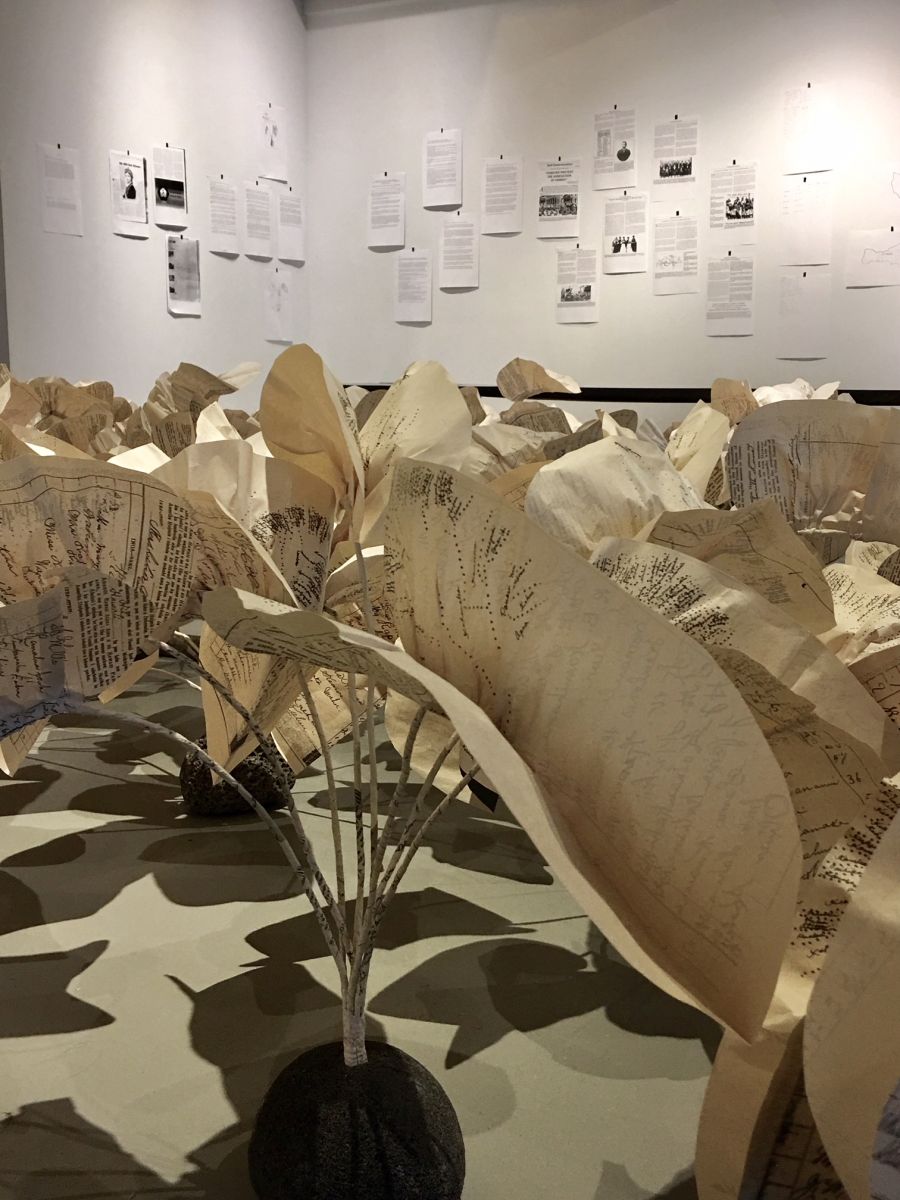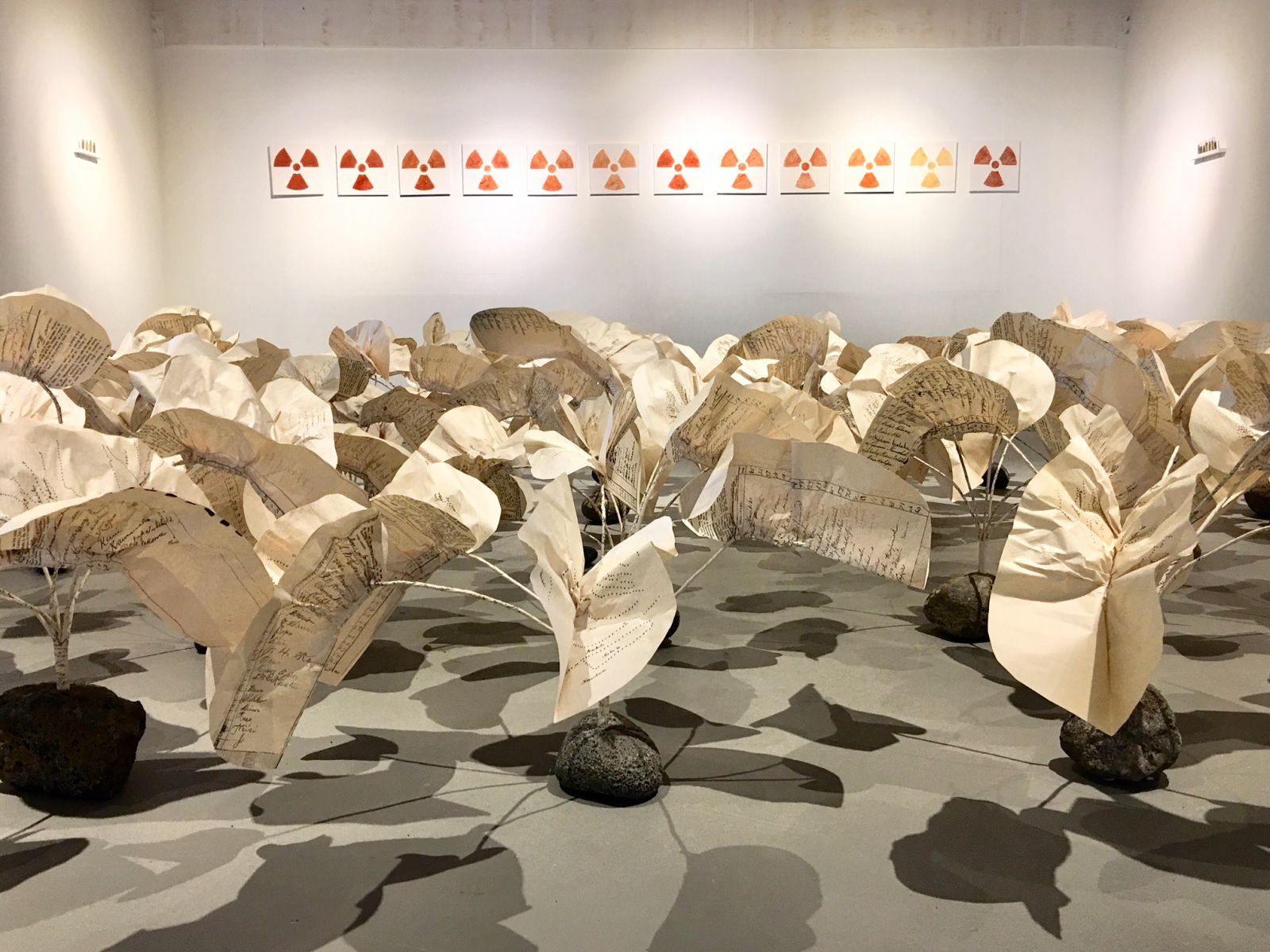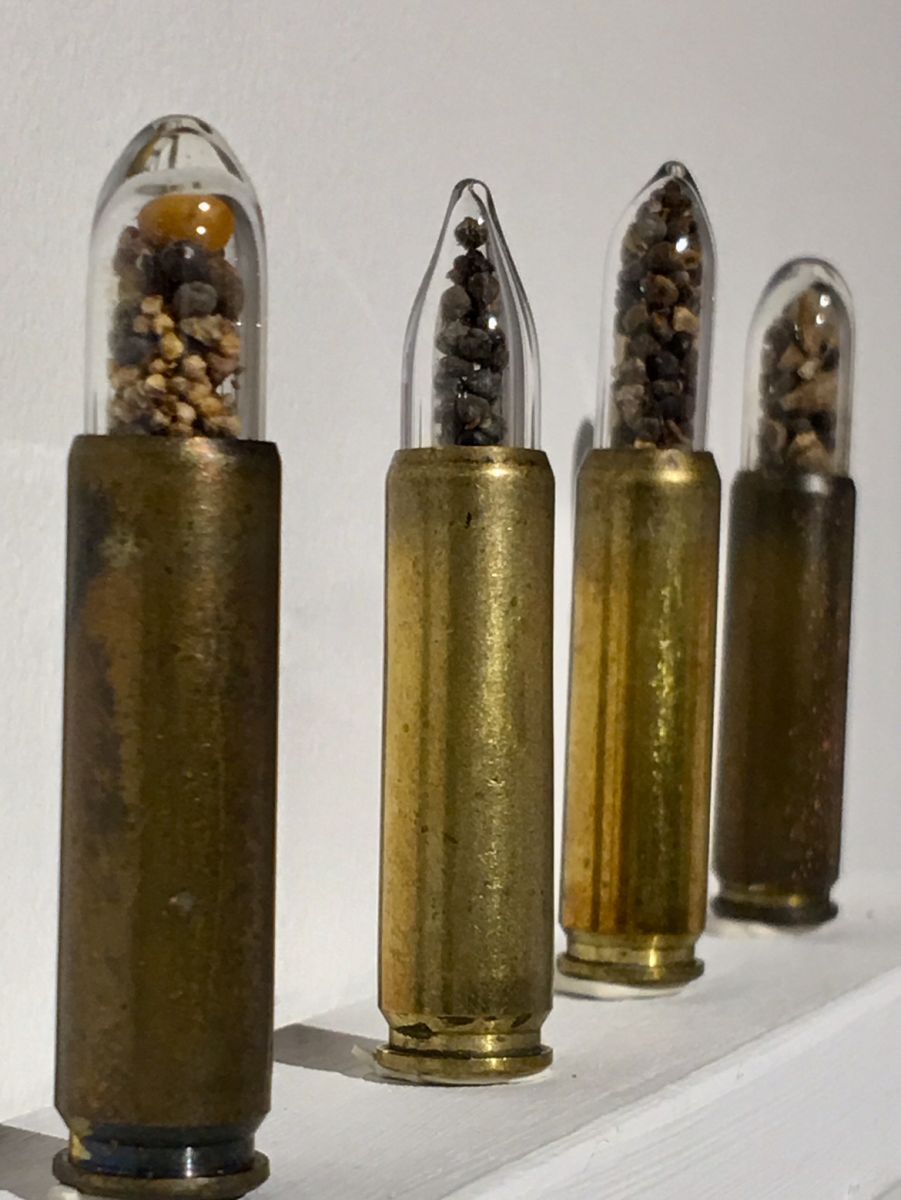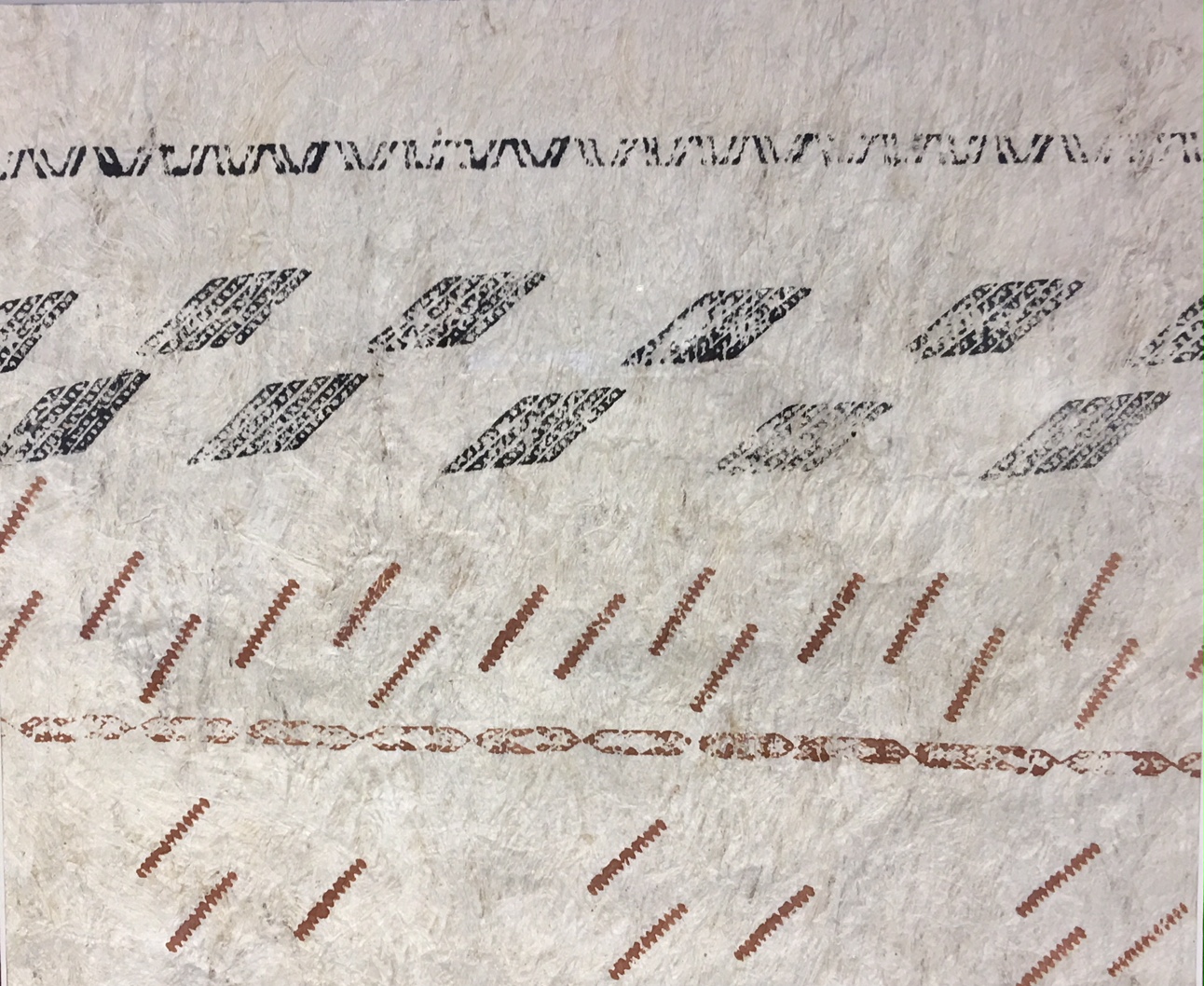Galerie 103 is pleased to present Hawai‘i Island cultural practitioner, sculptor and installation artist Bernice Akamine. Akamine's recurring themes include environmental and cultural issues.
Her first solo exhibition on Kauaì will include two bodies of work, Kalo, a mixed-media installation representing 87 individual kalo plants sculpted from the pages of Kè: The Hui Aloha Aina Anti-Annexation Petitions 1897–1898 (Petitions). Long-time conceptualized by the artist Papahanaumoku, Earth Mother was materialized in response to the emergency alert of April 13, 2017, mixed media, including Papahonua, bullet casing, glass, àlaea and lepo; Kaua`ì, Oàhu, and Hawai`ì.
Akamine is one of four native Hawaiian artists selected for the II Honolulu Biennial in 2019. She has exhibited both nationally and internationally. Selected awards include a 2015 Native Hawaiian Artist Fellowship from the Native Arts and Cultures Foundation; a 2012 Community Scholar Award from the Smithsonian Institution, National Museum of Natural History; and a 1999 Visiting Artist Award at the Smithsonian Institution, National Museum of the American Indian in New York City.
.jpg)
KALO detail

Kalo + Hae Hawai`i (kapa)

Kalo + research documentation , studies
BELOW: Papahanaumoku, Earth Mother was materialized in response to the Emergency Alert of April 13 2017, mixed media including Papahonua, bullet casing, glass, 'alaea and lepo; Kaua'i, O'ahu and Hawai'i





`Ohe K`pala
Media: Kapa and printed images, using ?ohe k?pala from the Australian Museum’s
Pacific Collection
While doing research in the collections of The Australian Museum with Dr. Jenifer
Newell, Manager, Pacific and International Collections of the Museum, we came
across two `ohe k`pala with paper labels attached to their un-carved sides. On closer
inspection I could see written on the first `ohe k`pala:
from H.R.H. Keelikolani
Ohe Kapala or native bamboo for native cloth marking
and a separate Museum label that read,
E. 4397
HAWAIIAN ISLANDS.
BAMBOO FOR PRINTING CLOTH.
EXCH.: BERNICE PAUAHI
BISHOP MUSEUM.
Hand written on the handle on the carved side of this `ohe k`pala was the
handwritten word “manu” or bird. While it has been written that some of the kapa
designs on the ?ohe kap?la and i?e kuku have names attached to them, this was the
first time I had seen an ?ohe kap?la associated with the word manu.
The second ?ohe k?pala E. 4394 was also labeled as coming from H.R.H. Keelikolani
from an exchange with Bernice Pauahi Bishop Museum, and looked as though there
was a word, although indecipherable, written on its handle.
As a kanaka maoli, artist and cultural practitioner to simply be holding these objects
that were preserved by H.R.H. Princess Ruth Luka Keanolani Kauanahoahoa
Ke?elik?lani, were then accessioned into the Bishop Museum Collection, and
eventually traded to the Australian Museum was truly an honor. But then, to be
allowed to print with the two ?ohe kap?la from the collection of H.R.H. Keelikolani,
and two other ?ohe kap?la, E.4393 and E. 4359 from the same Collection, was
amazing. Added to that, the discovery of a named ohe kapala, manu, from H.R.H.
Keelikolani’s collection made this the trip of a lifetime.
E. 4397 and E. 4394 are printed in black and E. 4393 and E. 4359 are printed in brown.





